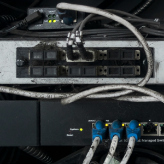 The massive success of ransomware like WannaCry and Petya have spurred other cybercriminals to develop their own ransomware and sell it on the black market. This means we can expect more ransomware attacks in the future. To prepare your business, you need virtualized disaster recovery solutions. Here’s why.
The massive success of ransomware like WannaCry and Petya have spurred other cybercriminals to develop their own ransomware and sell it on the black market. This means we can expect more ransomware attacks in the future. To prepare your business, you need virtualized disaster recovery solutions. Here’s why.
Virtual DR
Virtual DR solutions allow you to create point-in-time copies, or “snapshots,” of operating systems, data, and virtual machines as they appear at a given point in time. These snapshots can then be loaded onto any workstation with everything still intact. In the event of a ransomware attack, administrators can essentially roll back the system to a point before the malware hit.
What’s great about point-in-time copy features is that they are automated. Just schedule the snapshots, and your virtual DR software will do the rest. And although virtual DR solutions vary, most of them have the capacity to store thousands of point-in-time copies, giving you plenty of restore points to choose from.
Why virtual DR trumps traditional DR
Traditional DR methods don’t have these features. Even though most computer operating systems have a system restore functionality, modern ransomware strains are designed to disable them. On the other hand, virtual DR software isolates point-in-time copies and restore functionality from virtual machines, which means they can’t be affected if one virtual machine was compromised with ransomware.
Another reason why traditional DR is not a great option is because there is a lot of manual labor involved. You have to copy all your data into a backup drive, reinstall applications, and reconfigure hardware. By the time you’ve recovered from the ransomware attack, the financial and reputational damage caused by downtime will have taken its toll on your business.
When recovering your system, you want as little hassle as possible. With virtual DR, you can load a clean, ransomware-free snapshot onto your system in less than 30 minutes.
However, implementing virtual DR can be complex, especially if you don’t have much IT expertise. But if you partner with us, this won’t be a problem! Call us today to get robust solutions that guarantee business continuity.


